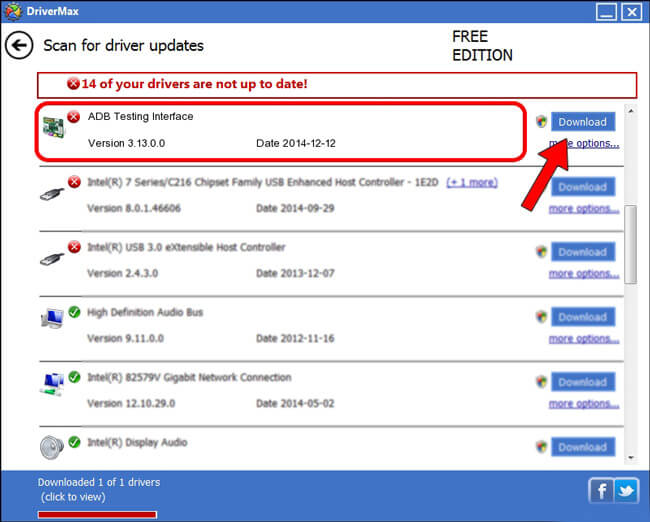

- #Techtool pro 8 full version install
- #Techtool pro 8 full version driver
- #Techtool pro 8 full version iso
- #Techtool pro 8 full version mac
- #Techtool pro 8 full version windows
The Type II (Conical/Connie) design adds a conical cup that receives a centering pin on the driver, improving the alignment of the driving tool to the fastener recess.Ī cross or double-slot screw drive has two slots, oriented perpendicular to each other, in the fastener head a slotted screwdriver is still used to drive just one of the slots. The design features curved walls, unlike the straight-walled slot drive.
#Techtool pro 8 full version install
Hi-Torque slot drives were designed by Alcoa Fastening Systems, for situations where very high torque is needed, along with the ability to repeatedly install and remove the fastener. They are often used on items where the user is not likely to have a screwdriver when needed, such as recessed screws that attach cameras to tripod adapters, and battery compartments in some equipment such as children's toys. ĭzus fasteners, which have a cam-lock body instead of a threaded body, use a slot drive.Ĭoin-slot drives are so-called because of the curved bottom of the recess, which facilitates driving them with a suitable coin.

1.2 × 6.5 which roughly matches a classic North American 1/4" screwdriver although the North American one is often a bit thinner (~1.0 mm).Īt least one mechanical method of temporarily holding a slotted screw to a matching screwdriver is available, the Quick-Wedge screw-holding screwdriver, first manufactured by the Kedman Company in the 1950s. Screwdriver tips are generally designated by blade thickness × width in mm, e.g.
#Techtool pro 8 full version iso
ISO 2380-1 specifies the internationally standardized shape and dimensions of the tips of screwdrivers for slotted-head screws as well as the minimum test torque the blade-to-handle connection shall withstand. Note that it is this typical chisel shape which allows 9 screwdriver sizes to drive 24 different slotted screw sizes, with the drawbacks of not fitting as closely as a hollow-ground screwdriver would, and increasing the possibility of damaging the fastener or surrounding area. Flat-blade jeweler's screwdrivers and the tips found in 1⁄ 4-inch or 6.4-millimeter drive sets are generally hollow-ground.
#Techtool pro 8 full version driver
A hollow-ground screwdriver is less likely to cam out (leave the slot due to the torque being translated into an axial force, similar to that encountered with Phillips drive but dependent only on driver blade), so more torque can be applied without damaging the screw head. The tool used to drive a slot is called a common blade, flat-blade, slot-head, flat-tip or flat-head / flathead screwdriver. For this reason, cruciform-slotted along with drives have replaced the slot drive in numerous applications. However, this design is not well-suited for installation by power tools, given that a power driver often slips out of the slot this often causes damage to the screw and surrounding material. Slot screws are also used in the restoration of antique furniture, vehicles, and equipment. The slotted screw is commonly found in existing products and installations, along with use in simple carpentry work and in applications where minimal torque is needed. Additionally, it is unique compared to other common drives, due to it being straightforward to manufacture the slot head, and the ability to be driven by a simple handtool. This form was the first type of screw drive to be developed, and for centuries, it was the simplest and cheapest to make. Slot screw drives have a single horizontal indentation (the slot) in the fastener head and is driven by a "common blade" or flat-bladed screwdriver. Standard slot screwdriver sizes (ISO 2380). In this case, either the SMART check or the surface scan test can help.Slotted drives Slot drive tool and screw sizes Blade width If the volume structures test doesn’t find any problems, but you’re still thinking it’s a disk problem, then it might be the hardware of the disk itself. The volume structures test in Techtool Pro can be used to identify this damage, while the Volume Rebuild tool can be used to repair it.
#Techtool pro 8 full version windows
Volume structures damage (or directory damage for recovering Windows users) refers to the data stored on a disk that keeps track of your photos, movies, music, and other files on the disk. Volume structures damage or physical disk damage. If you suspect a hard drive problem, it will be one of two things. Slow performance, sudden application crashes, and even computer crashes can be attributed to a malfunctioning hard drive. Both solid-state and rotational hard drives can be the most error-prone components in your Mac.

#Techtool pro 8 full version mac
If your Mac is running slowly, crashing, or just generally misbehaving, the problem may be your disk.


 0 kommentar(er)
0 kommentar(er)
